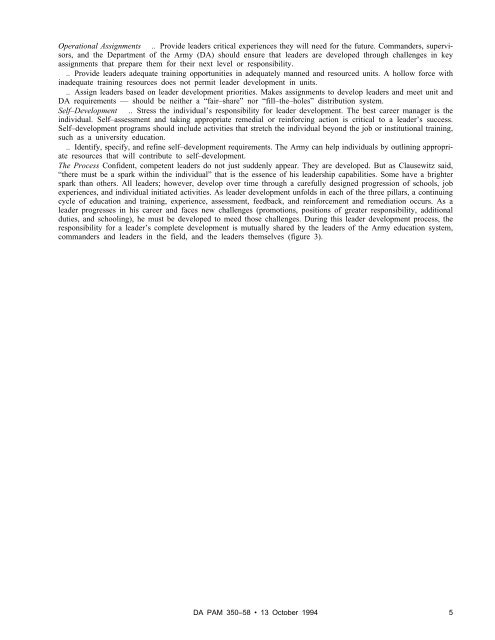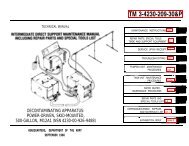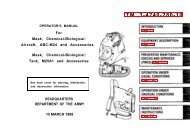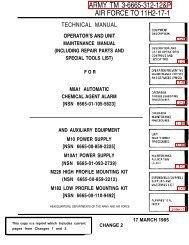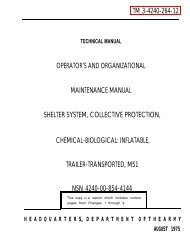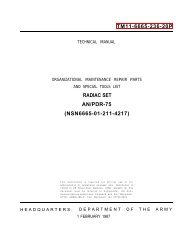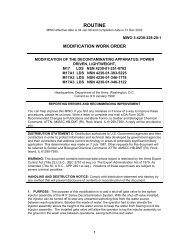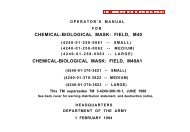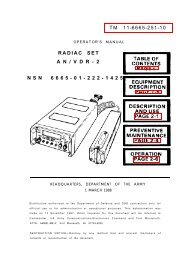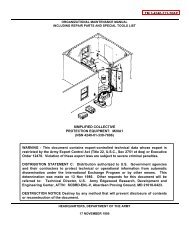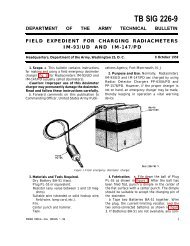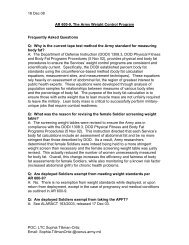LEADER DEVELOPMENT FOR AMERICA'S ARMY
LEADER DEVELOPMENT FOR AMERICA'S ARMY
LEADER DEVELOPMENT FOR AMERICA'S ARMY
Create successful ePaper yourself
Turn your PDF publications into a flip-book with our unique Google optimized e-Paper software.
Operational Assignments .. Provide leaders critical experiences they will need for the future. Commanders, supervisors,<br />
and the Department of the Army (DA) should ensure that leaders are developed through challenges in key<br />
assignments that prepare them for their next level or responsibility.<br />
.. Provide leaders adequate training opportunities in adequately manned and resourced units. A hollow force with<br />
inadequate training resources does not permit leader development in units.<br />
.. Assign leaders based on leader development priorities. Makes assignments to develop leaders and meet unit and<br />
DA requirements — should be neither a “fair–share” nor “fill–the–holes” distribution system.<br />
Self–Development .. Stress the individual’s responsibility for leader development. The best career manager is the<br />
individual. Self–assessment and taking appropriate remedial or reinforcing action is critical to a leader’s success.<br />
Self–development programs should include activities that stretch the individual beyond the job or institutional training,<br />
such as a university education.<br />
.. Identify, specify, and refine self–development requirements. The Army can help individuals by outlining appropriate<br />
resources that will contribute to self–development.<br />
The Process Confident, competent leaders do not just suddenly appear. They are developed. But as Clausewitz said,<br />
“there must be a spark within the individual” that is the essence of his leadership capabilities. Some have a brighter<br />
spark than others. All leaders; however, develop over time through a carefully designed progression of schools, job<br />
experiences, and individual initiated activities. As leader development unfolds in each of the three pillars, a continuing<br />
cycle of education and training, experience, assessment, feedback, and reinforcement and remediation occurs. As a<br />
leader progresses in his career and faces new challenges (promotions, positions of greater responsibility, additional<br />
duties, and schooling), he must be developed to meed those challenges. During this leader development process, the<br />
responsibility for a leader’s complete development is mutually shared by the leaders of the Army education system,<br />
commanders and leaders in the field, and the leaders themselves (figure 3).<br />
DA PAM 350–58 • 13 October 1994<br />
5


